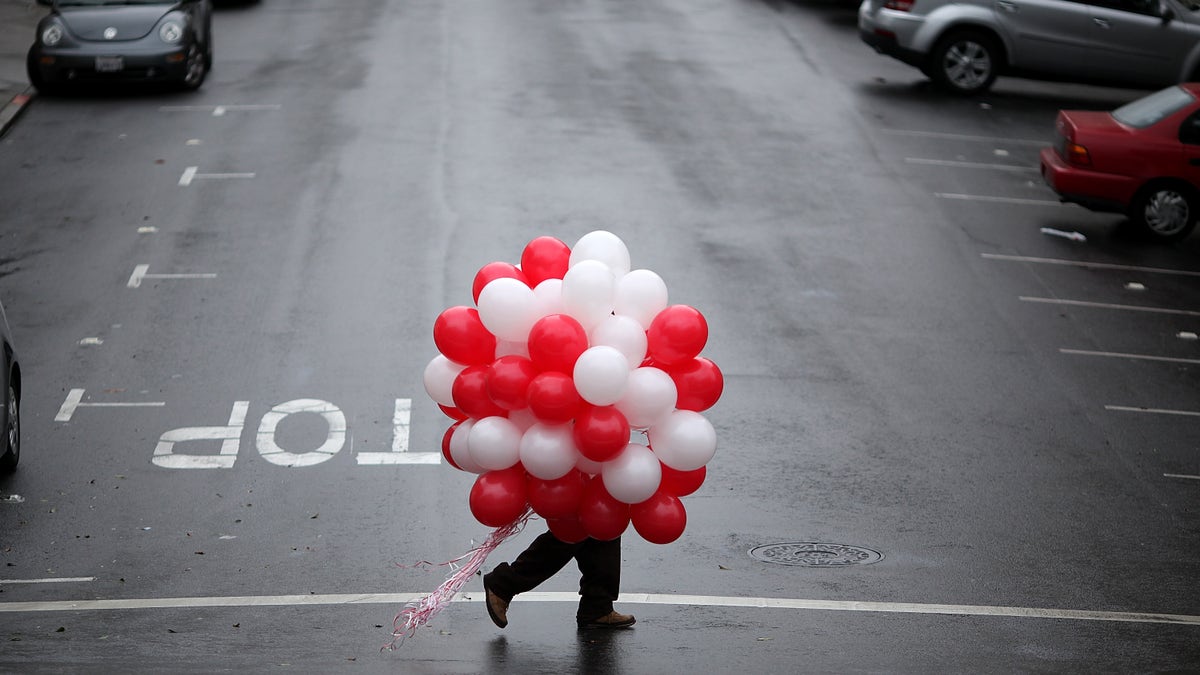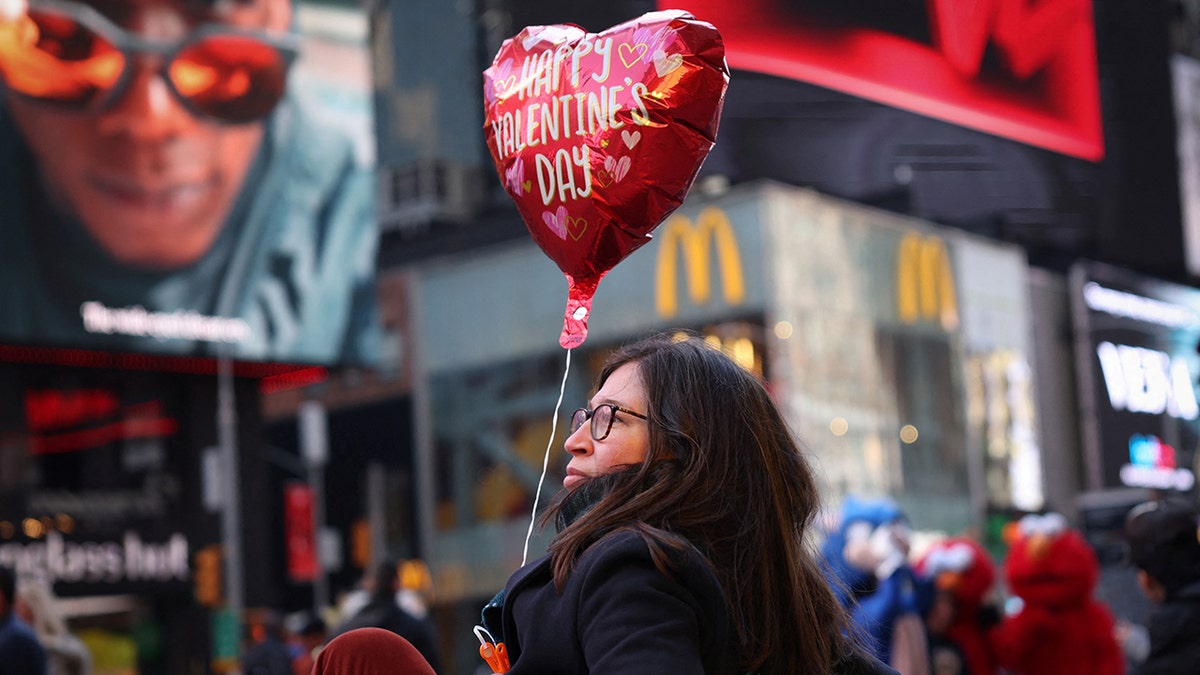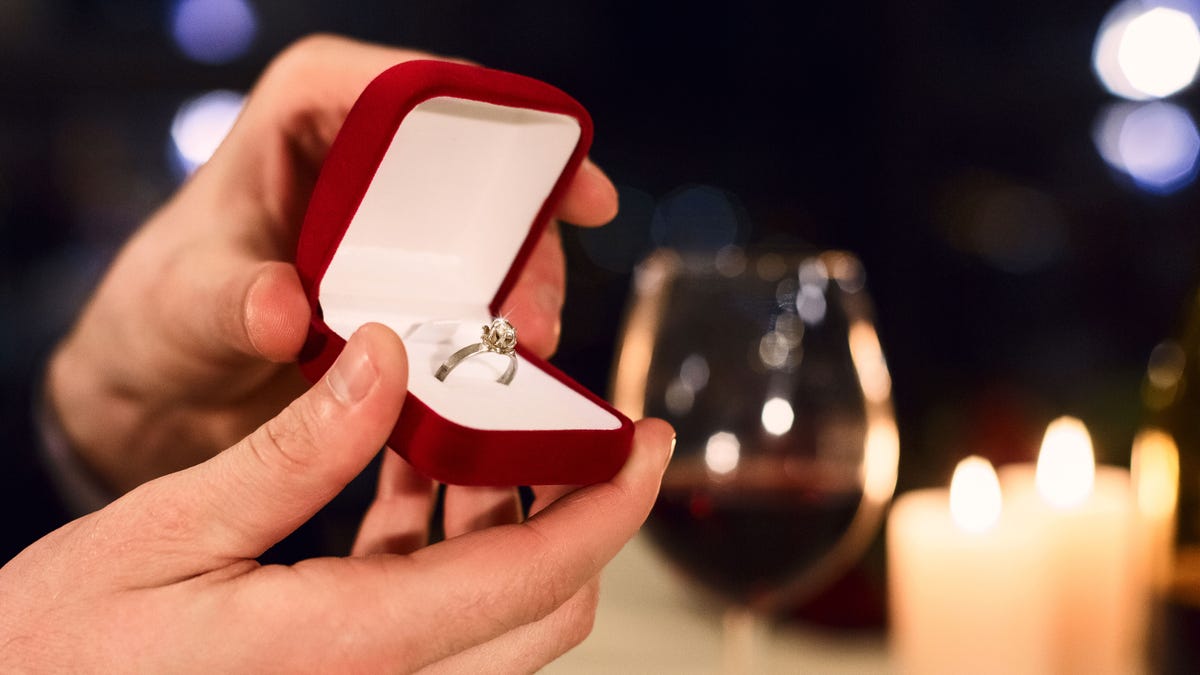The commercial evolution of Valentine’s Day: From flowers to chocolates, jewels, and more


56% of consumers plan to celebrate Valentine’s Day this year (iStock)
Every year for Valentine’s Day, lovers around the world pull out all the stops for their sweethearts.
From traditional flowers or chocolate to more expensive gifts such as diamonds, the holiday is just as much about spending hard-earned cash as it is about love.
“Consumers are expected to spend a record $27.5 billion on Valentine’s Day this year,” according to an annual survey by the National Retail Federation (NRF) and Prosper Insights & Analytics.
CLASSIC ROM-COMS TO WATCH ON VALENTINE’S DAY
“Whether they are celebrating a significant other or someone else in their lives, Valentine’s Day is meaningful for many people,” said NRF Vice President of Industry and Consumer Insights Katherine Cullen in the release.
Valentine’s Day consumer spending this year is projected to surpass last year’s $25.8 billion and the previous record of $27.4 billion set in 2020.
“Consumers are looking for special ways to treat their loved ones and can expect retailers to provide the best gift options and deals,” Cullen added.
The survey also found that 56% of consumers plan to celebrate Valentine’s Day this year, up from 53% in 2024.
2gtrfdr
Is Valentine’s Day materialistic?
Whether one perceives Valentine’s Day as materialistic depends on personal beliefs and values.
Some may choose to celebrate the day with meaningful, non-material gestures, while others may embrace the tradition of exchanging gifts as a way to express love. The key lies in striking a balance between material expressions and the emotional essence of the celebration.
The economic aspects surrounding holidays like Valentine’s Day draw the focus away from human relationships, possibly weakening other forms of social interaction, according to Forbes.
So, while Valentine’s Day may be a traditional holiday of romance, there’s nothing accidental about its tendency to hit your pockets.
What are the origins of Valentine’s Day?
There is much speculation and mystery over the true identity of St. Valentine and the holiday’s exact origins, but it appears to be a combination of Christian and some pagan traditions.
The Roman Catholic Church recognizes different Christian martyrs who were executed while trying to practice their faith or helping persecuted prisoners.
In one legend, Valentine acts as a priest in ancient Rome, performing marriage in secret for young lovers after Emperor Claudius II barred young men from marrying in the city so that they would stay in his army, according to History.com.
After Valentine’s actions were discovered, he was sentenced to death and beheaded by the emperor.
Another legend suggests that Valentine was imprisoned for his beliefs and sent a letter to a young girl signed “from your Valentine,” inspiring the tradition of sending love notes on this day, notes History.com.
While the exact details behind the identity of the individual are mysterious and lack concrete historical records, most stories concerning the holiday’s namesake seek to portray him as a romantic and heroic figure during the Christian persecution by the Romans.

Valentine’s Day has evolved into a celebration of love and affection marked by the exchange of cards, flowers and tokens of affection. (Justin Sullivan/Getty Images)
Why do we celebrate Valentine’s Day?
The association of Valentine’s Day with romantic love can be traced back to the Middle Ages when the notion of courtly love flourished. Over time, the day evolved into a celebration of love and affection marked by the exchange of cards, flowers and tokens of affection.
Today, it is a widely celebrated and commercialized occasion for expressing love and appreciation.
VALENTINE’S DAY QUIZ! HOW WELL DO YOU KNOW THESE FACTS ABOUT THE ANNUAL DAY OF LOVE?
The modern Valentine’s Day became more popular in Great Britain during the 17th century, with the tradition of written letters to emphasize an individual’s affection for a lover. The printing technology that emerged at the dawn of the 20th century helped to popularize its influence across the English-speaking world.
However, the origins of how Valentine’s Day became a major commercial holiday apparently can be traced to the United States.

National Retail Federation projects Americans will spend $27.5 billion on Valentine’s Day in 2025. (REUTERS/Mike Segar/File Photo)
While the practice of gifting your Valentine greeting cards was a centuries-long tradition in England, where the holiday was birthed, it was not until Valentine’s Day was “rejuvenated” stateside in the mid-19th century that it saw its commercial boom, according to the Library of Congress.
For more Lifestyle articles, visit www.foxnews.com/lifestyle.
At first, the Old World celebration was “often forgotten” and “easily neglected” by those in the U.S. Things took a turn in the 1840s when the holiday was transformed into something “not-to-be-missed,” author Leigh Eric Schmidt wrote in the 1995 book, “Consumer Rites: The Buying & Selling of American Holidays.”
Merchants outside the card industry, such as jewelers, florists and confectioners, eventually joined the bandwagon.

Valentine’s Day may be a traditional holiday for romance, but there’s nothing accidental about its tendency to hit your pockets. (iStock)
CLICK HERE TO SIGN UP FOR OUR LIFESTYLE NEWSLETTER
“When merchants rediscovered the [holiday], the former transformed the latter, not vice versa, as merchants systematically extended the apparatus of the market into the realm of celebration,” Schmidt wrote.
According to the NRF, the most popular gift categories this year include candy (56%), flowers (40%), greeting cards (40%), an evening out (35%) and jewelry (22%).
Americans plan to spend a total of $6.5 billion on jewelry, $5.4 billion on an evening out, $2.9 billion on flowers, and $2.5 billion on candy.
CLICK HERE TO GET THE FOX NEWS APP
About $1.4 billion will be spent on greeting cards alone.
Philip Nieto and Kerren Keith Gaynor contributed to this report.





